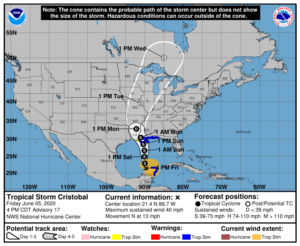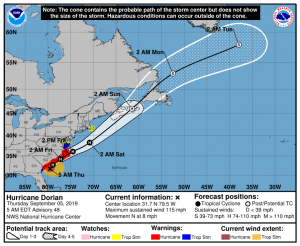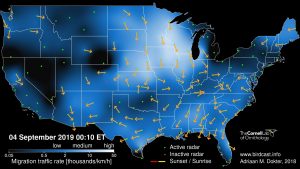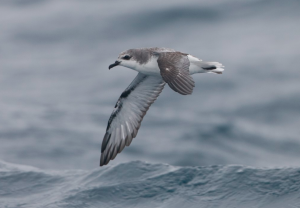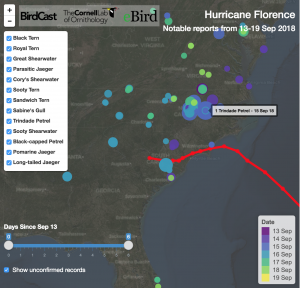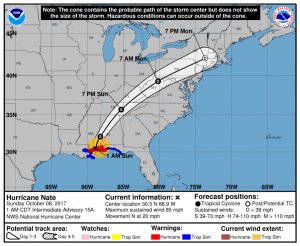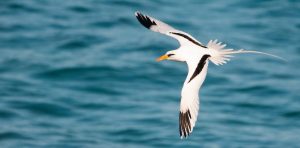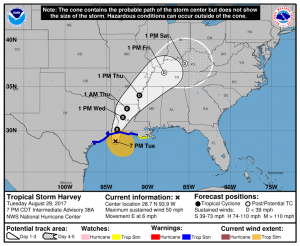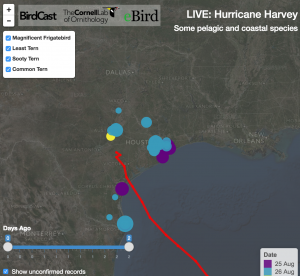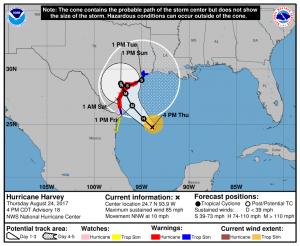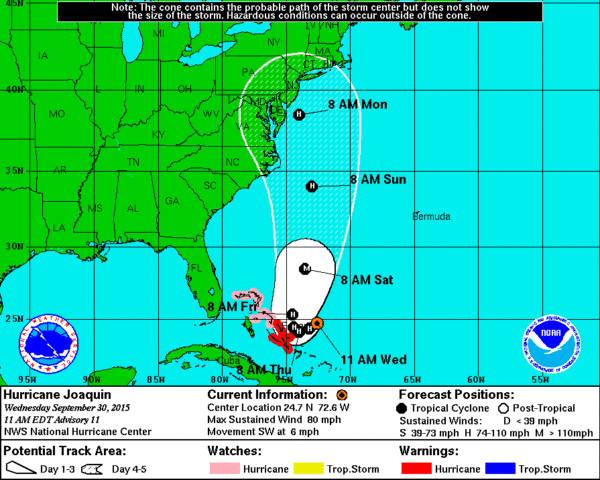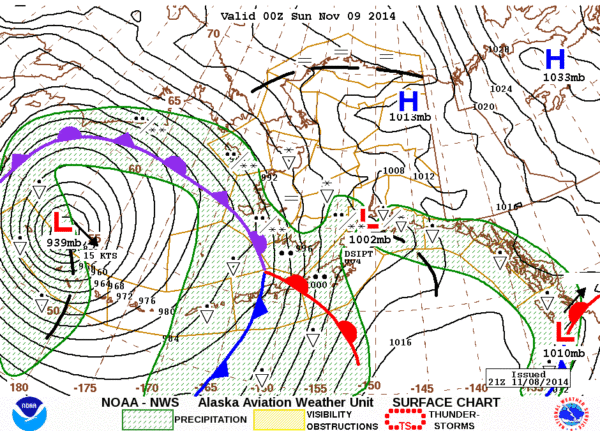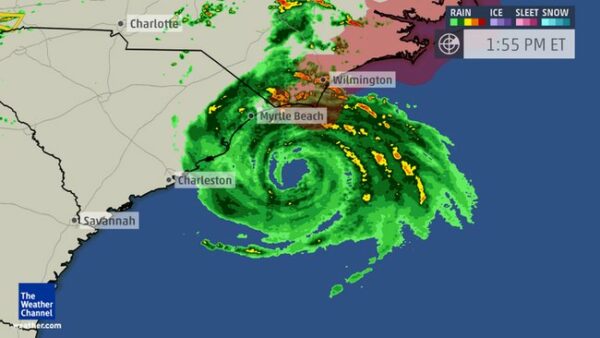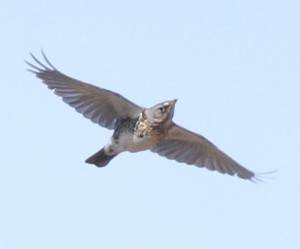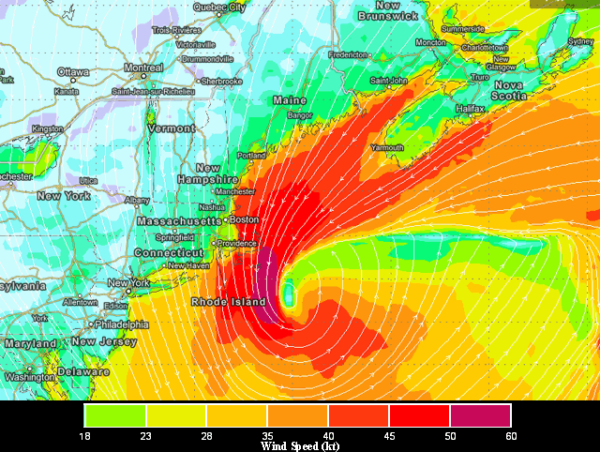News: Cyclones
Here comes Tropical Storm Cristobal, forecast to make landfall in southeastern Louisiana on Sunday evening. With safety the top priority, we briefly highlight a few possible tropical and pelagic species that might appear far inland in the wake of the storm's passage. Read more...
Hurricanes and their impacts, in particular in depositing seabirds far afield from their normal haunts, represent unique opportunities to understand how animals behave in and respond to serious disturbances. Check out live sightings of species that may by associated with the passage of Dorian this week. Read more...
BirdCast tracks with great interest the movements of hurricanes and the pelagic species that they often entrain and displace on shore and at times far inland. The team is also interested in bird migration around hurricanes, and with the arrival and passage of Hurricane Dorian off the coast of Florida, Georgia, and the Carolinas, we can see how some birds handle the circulation of an intense cyclonic storm. Read more...
Hurricane Michael strengthened rapidly into a major hurricane on Tuesday, and as with previous storms on which BirdCast reported, it may have dramatic impacts on local and transient bird communities and their habitats when it comes ashore and passes through the Southeastern US. Live sightings will appear on the current observations map as they are entered into eBird, but as always, for those in the path of this storm, safety first! Read more...
Real-time sightings from your eBird checklists will appear in this post's map, providing a unique opportunity to help us understand how these storms transport birds and how birds respond to extreme disturbances in their annual cycles. Read more...
Hurricanes and their impacts, in particular in depositing seabirds far afield from their normal haunts, represent unique opportunities to understand how animals behave in and respond to serious disturbances. Hurricane Florence is no exception. Read more...
Hurricane Nate came ashore in Mississippi late Saturday night and early Sunday morning. Although this storm did not pack the strong winds or very heavy rains of recent hurricanes in the Gulf of Mexico or Caribbean, all such storms are dangerous and require the utmost respect in terms of putting safety first (particularly with respect […] Read more...
Hurricane Irma will transport numerous species of birds far from their normal haunts. This is a dangerous storm that has already devastated many areas of the Caribbean, and it is forecast to make landfall in the US this weekend. Our hearts go out to those affected by this storm and the recent Harvey, and we hope that all those still in the path of this storm heed all warnings from the National Hurricane Center. Significant storms like this often trap (or 'entrain') birds in their circulation, depositing them far from where they originated. We still do not fully understand many of the mechanisms involved in birds getting 'entrained' and then deposited by storms, which is one reason why Team BirdCast (and many others) are interested in sightings associated with these storms. Read more...
Hurricane Harvey came ashore on the central Texas coast last week with an almost unimaginable combination of destructive winds and rain. Team BirdCast has been tracking the avian fallout from this storm, perhaps a brief respite for some to escape from the horrible scenes of the devastation in Harvey's wake. Read more...
Hurricane Harvey's path of destruction has seen unprecedented and catastrophic events in coastal Texas. Some birders have been out safely documenting what they have seen, and numerous typically pelagic or near shore species have been displaced far inland from the coast. Read more...
Team BirdCast monitors birds and their associations with hurricanes when we can, as they provide rare opportunities to study entrainment and displacement of birds. Such storms are dangerous in the extreme, no matter what intensity, and Hurricane Harvey proves no exception. This storm is coming ashore as a Category 4 Hurricane, very strong and very dangerous! Read more...
Hurricane Harvey is rapidly intensifying in the Gulf of Mexico. This dangerous storm is forecast to strike the Texas coast on Friday night or Saturday morning as a major hurricane and then meander in the immediate vicinity of the coast for several days. Entrainment and displacement of seabirds is highly likely. Read more...
Update 930am EDT, 2 October 2015 The newest models from the National Hurricane Center suggest Hurricane Joaquin will stay far to the east of the Atlantic Coast. We will continue to monitor the storm, although the most likely outcome from the avian perspective is a windfall of Nearctic and Neotropical migrants in the Palearctic! Given […] Read more...
Storm! There has been much discussion of the remains of Super Typhoon Nuri as it rips up the Pacific. The remnants of the storm gathered some serious strength and bombed to an anomalously low central pressure in the low 920s. This is epic proportion for any extratropical storm, especially in the Pacific Ocean. And presently, […] Read more...
With a month of the official hurricane season already in the books, Hurricane Arthur arrives on the scene. This Category Two storm is forecast to graze the Outer Banks of North Carolina before shooting off to the Northeast through the Canadian Maritimes toward Greenland. There is a precedent for what we might expect from this storm from an ornithological perspective. […] Read more...
Despite a reasonably quiet season for tropical systems in the western North Atlantic, a lingering area of low pressure and associated storms that was once Tropical Storm Gabrielle has reorganized and started to move to the North and Northeast. The most current update from the National Hurricane Center suggests a western Newfoundland landfall for the […] Read more...
Thankfully, Tropical and Post Tropical Storm Andrea was neither an epic nor devastating storm. It moved rapidly from the Gulf Coast off the coast of New England, bringing heavy rains primarily, and its speed and eventual path made it mostly an ornithological bust. Some species may have been displaced, but probably the only noticeable appearances […] Read more...
The official start of the 2013 hurricane season in the Atlantic was 1 June. The current forecasts suggest an active season, as evidenced by the AccuWeather summary of NOAA data below: Team BirdCast will be monitoring hurricanes and discussing the birds that they entrain and displace throughout the 2013 hurricane season. With each discussion, we […] Read more...
We continue to track the Eastern promises that we highlighted in December, as this past weekend provided yet another tantalizing example of the potential fruits of such promises. A Fieldfare was discovered in Carlisle, MA and seen and photographed by many. This is no doubt one of the prizes of any year of Eastern Promises! […] Read more...
If the groundhog were a birder, perhaps he would have predicted six more weeks of a winter like this . . . We know that Punxsutawney Phil did not see his shadow. Many in the US probably rejoice at his early spring prediction, but, with a winter like this, many birders may not be so thrilled […] Read more...

